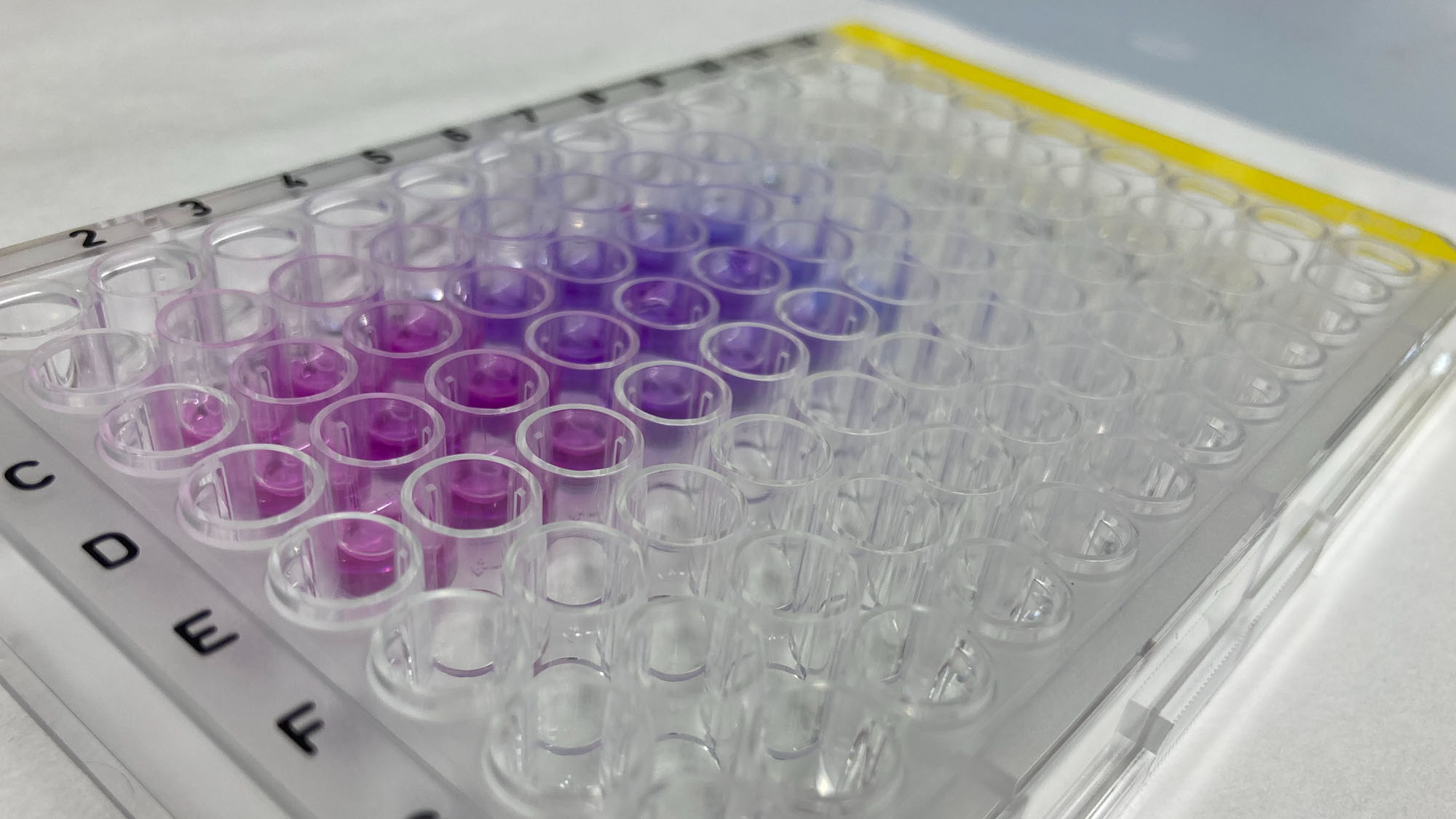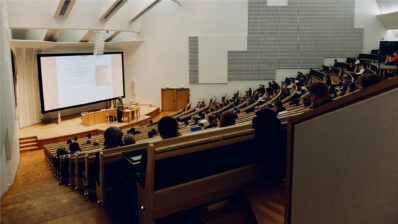This image by Neus Martínez, a researcher in Pilar Navarro‘s group at the Hospital del Mar Medical Research Institute (IMIM), with whom she recently received the La Vanguardia science award, shows a 96-well plate.
Each of these wells contains pancreatic tumour cells that have received a different treatment. This allows the researchers to study the viability of the cells under many different conditions at the same time, very quickly.
The assay is based on the ability of living cells to convert a dye (resazurin) into a fluorescent end product (resorufin). This fluorescence is detected by a plate reader that “reads” the fluorescence of each well, as if it were a spectrophotometer.
What the researchers are looking for is to see which treatments reduce the fluorescence – that is, which treatments kill the cancer cells. So, in this experiment, darkness (the lack of fluorescent light) marks the hope for a new pancreatic cancer treatment.
Want to see your photo here? Send us images related to science or life in the PRBB to ellipse@prbb.org.






